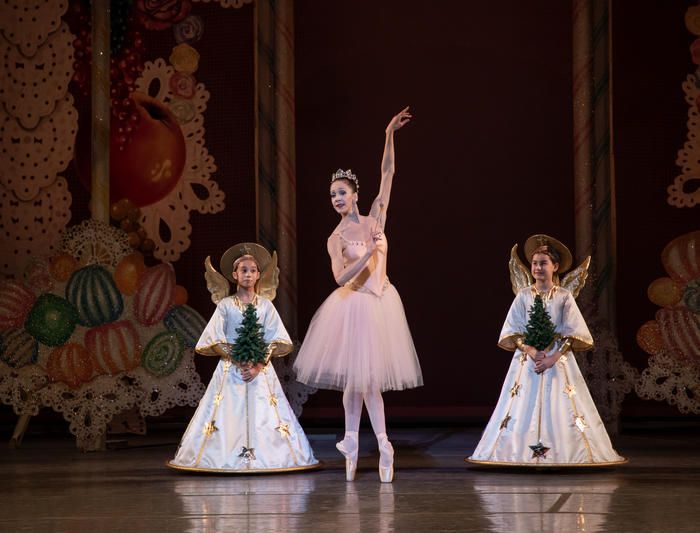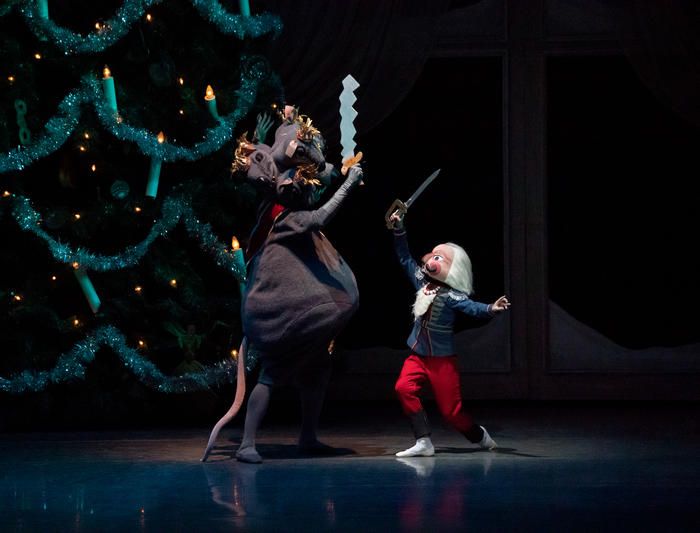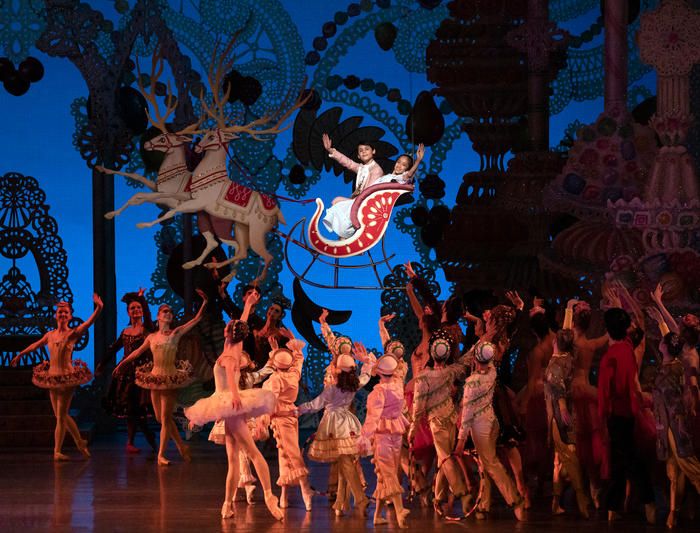NYC’s Forgotten ‘War on Christmas Trees’
Discover how an obscure holiday crackdown affects festive street vendors today!


In a classic ballet performance of The Nutcracker, you can enjoy a spectacle of dancing, gift-giving, magical voyages through lands of snow, waltzing flowers, and a happy sugar-plum fairy who dotes upon a young girl and her nutcracker prince. However, the original 1816 story of The Nutcracker, derived from E.T.A Hoffman’s The Nutcracker and The Mouse King, was far from a happy child’s fairytale.
Hoffman’s story is like most ballet adaptations in that it begins at a Christmas Eve Party. There, young Marie receives the gift of a nutcracker, which, at the very end, turns into a human and walks her off into a magical land of toys and candy. However, there are more dark elements and details in the original story than in the ballet performances. In The Nutcracker and The Mouse King, the characters face beheadings and “death under the executioner’s ax.” After a long night of Christmas festivities with her family, Marie cradles the nutcracker in her sleep and wakes up caught in a fatal battle in which the “bloodthirsty” mice bite an opposing toy army to shreds. Unlike the ballet performances, there is no Sugar Plum Fairy that guides Marie and the Nutcracker into the Land of the Sweets, but there is a seven-headed mouse king who taunts Marie into giving him all of her toys.

Maria Kowroski as the Sugarplum Fairy in “The Nutcracker”, choreography © The George Balanchine Trust, New York City Ballet, David H. Koch Theater, Lincoln Center, Thursday, December 5, 2019, 7pm. Credit Photo: Erin Baiano
Hoffman’s darker tale was adapted into a lighter version by Alexander Dumas. This adaptation caught the attention of ballet masters at the Mariinsky Theater in Russia. Pyotr Ilyich Tchaikovsky was commissioned to compose music for the first ballet production of The Nutcracker in 1892. Although Tchaikovsky’s music was a success, the performance fell short of pleasing its audience. Critics felt the fairy-tale-like narrative undermined the artistic agency of classical ballet. One critic wrote that The Nutcracker was “‘produced primarily with children for children with ‘precisely nothing’ to contribute to ‘the artistic fate of our ballet.’”
However, because The Nutcracker was centered around children, it became popular in the 20th century. Although the Ballet Russe de Monte Carlo and the San Francisco Ballet performed their own versions of The Nutcracker in the U.S. during the 1940s, the ballet did not gain widespread popularity until the New York City Ballet’s performance in 1954.
George Balanchine, artistic director and co-founder of the New York City Ballet, had previously performed in the Mariinsky Theater’s production The Nutcracker and had helped choreograph San Francisco Ballet’s production of the ballet. Drawing from these experiences, he choreographed and designed a ballet performance that would attract American families’ hearts and inspire ballet companies across the country to create their own twists on The Nutcracker.
Today, The Nutcracker is the most widely viewed ballet performance of the year and the performance through which ballet companies usually bring in the most ticket sales. There have been various adaptations, including a hip hop Nutcracker, a Jewish Nutcracker, and The Hard Nut, a Nutcracker performance blended with humor of the 1970s, and unconventional costumes.

“The Nutcracker”, choreography © The George Balanchine Trust, New York City Ballet, David H. Koch Theater, Lincoln Center, Thursday, December 5, 2019, 7pm. Credit Photo: Erin Baiano
What made Balanchine’s Nutcracker stand out from previous performances was its emphasis on children. Children played primary roles as cousins of Marie in the Christmas Eve party, little soldiers and mice, angels, and candy canes in the Land of the Sweets. The setting, costume, and choreography turned a stage where ballet performances would usually be serious and abstract into a child’s fantasy. The apparently modest Christmas Tree in Act I grows into a 41-foot tall tree as Marie falls asleep, and right before the intermission, 50 pounds of flammable pieces of paper fall, creating a blizzard where snowflake dancers leap and twirl. There is an innocence, a comfort, and both a literal and metaphorical sweetness to the performance that makes it the perfect ballet for families to enjoy during the holiday season.
Balanchine’s The Nutcracker transformed a rather dark story into an enchanted fairytale. But is it completely pure and devoid of the dark nature of Hoffman’s tale? Or does it contain traces of darkness in the ballet’s racial stereotypes?
In Act II, when Marie and the Nutcracker (who at this point has transformed back into a human) venture into the Land of the Sweets, the two enjoy performances from dancers who represent tea from China, coffee from Arabia, and hot chocolate from Spain. In Balancine’s original choreography of “Chinese Tea,” two female dancers would appear wearing geisha wigs with a male dancer in a rice paddy hat and a Fu Manchu mustache. They would have happy-go-lucky smiles on their faces, bouncy, quick choreography, all while their index fingers were pointed up. In a Los Angeles Times op-ed, Jennifer Fisher writes that the two index fingers pointed upwards was “one of the most common of the ballet world’s efforts to signal Chinese-ness” even though there is no relationship between the gesture and Chinese culture.
Former dancer Phil Chan and New York City Ballet soloist Georgina Pazcoguin have prompted ballet companies to take the “pledge to End Yellowface,” a promise to end the stereotyping of ethnic cultures in performances and to increase diversity in companies and casting. In 2017, former artistic director of New York City Ballet Peter Martins worked with Chan to modify the costume and choreography of The Nutcracker’s “Tea” segment, changing the dress and makeup of the male dancer and completely removing the pointed fingers from the choreography. Several other ballet companies have followed suit, making changes to the choreography and dress to modify aspects of “Tea.”

“The Nutcracker”, choreography © The George Balanchine Trust, New York City Ballet, David H. Koch Theater, Lincoln Center, Thursday, December 5, 2019, 7pm. Credit Photo: Erin Baiano
But “Arabian Coffee” continues to remain unchanged — in most adaptations of The Nutcracker, a female dancer would appear with bare legs and a crop top. The choreography of “Coffee” entails slow, drawn-out dance moves that make it akin to belly dancing. As Jennifer Fischer notes in her research, “bare midriffs did not originate in the Middle East,” and most of the inspiration for the costume and choreography of “Arabiabian Coffe” seems to draw from a Hollywood interpretation of the Middle East. In fact, Balanchine’s The Nutcracker originally had a dancer smoking a hookah in the performance of “Arabian Coffee.” In contrast to the stereotyped depictions of “Tea” and “Coffee,” Fisher notes that the Spanish Chocolate sequence accurately draws from the Spanish Flamenco and escuela bolero. Similarly, the Russian Trepak performance contains styles similar to folk dances in Russia or Ukraine.
Some dancers and directors have argued that these portrayals are unoffensive because the depictions are merely part of a tradition. “That’s just the choreography. It’s been like that for years,” one dancer told Alice Robb in an article for The New Republic. In contrast, others have said these depictions reinforce stereotypes of Chinese and Middle Eastern culture. Aubrey Lynch, Director of Dance at the Harlem School of the Arts, explained that “You want kids to go to The Nutcracker and see themselves on stage, not a caricature of their race.”
The Nutcracker might seem much more appropriate and lighthearted for children and families because it is devoid of the dark tone from Hoffman’s original work. But, maybe the bright costumes, setting, and dancing actually conceal a piece of the performance that is not so dazzling: the misrepresentation of Chinese and Middle Eastern Culture. The magic of The Nutcracker is still there, but it can only completely be there for everyone watching if changes make it welcoming and enjoyable for all children and their families.
This year, you can be the judge for whether Balanchine’s The Nutcracker is purely a happy fairytale by watching the New York City Ballet’s recording of it on Marquee TV. You can also compare it to more nuanced variations of The Nutcracker. Excerpts of Mark Morris Dance Company’s The Hard Nut are available online for free, and the Brooklyn Ballet is offering in-person performances of The Brooklyn Nutcracker — dancers will be performing behind the glass windows of their studios while spectators can watch socially distanced outside.
George Balanchine’s The Nutcracker may not be perfect, but perhaps modern takes can provide viewers with a happy fairytale that best represents their diverse identities and interests.
Next, check out the Dance Theatre of Harlem’s viral street performance.
Subscribe to our newsletter